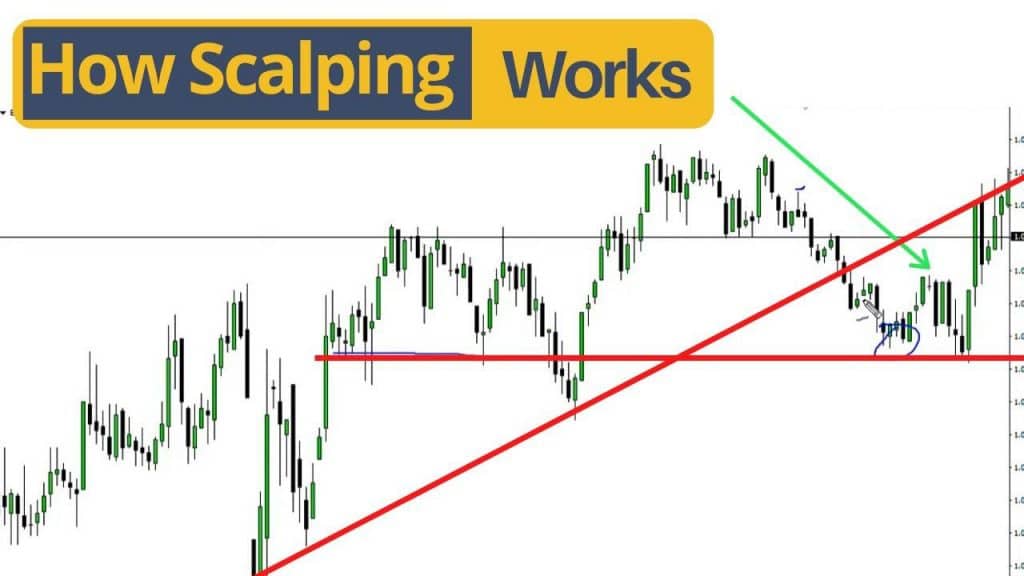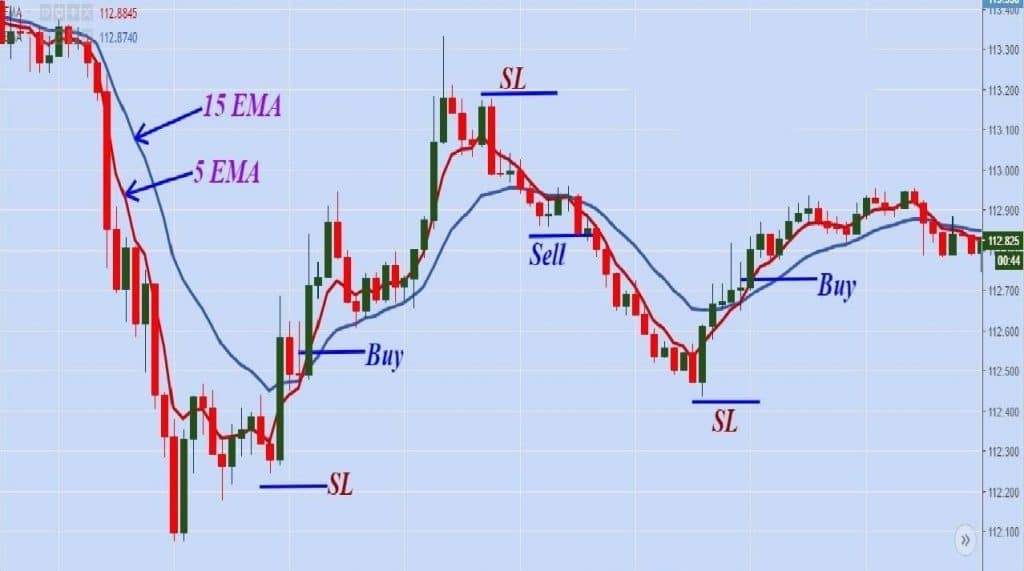Traders leverage many strategies to gain a competitive edge while trading various currency pairs in the forex market. While others depend on long-term strategies such as positional trading, others are known to play the short-term game. Day trading, whereby trades are opened and closed before the end of the day, has given rise to a common strategy widely referred to as scalping.
Scalping: how it works
Instead of opening one position and aiming at big returns, some traders opt to open and close as many trades as possible within a single day. In this case, they can lock in small profits, here and there, which, when compounded at the end of the day, can be much bigger. Likewise, scalping is the trading strategy that allows traders to skim as many small profits throughout a session.

In scalping, traders try to profit from short-term price swings. In this case, trades are opened in the direction of a short-term trend and closed immediately; the trend shows signs of reversal. Instead of eyeing one trade that will generate a bumper profit, scalpers make an array of trades from which small profits are compounded.
In addition to taking an array of trades, scalpers also increase the position size of trades in a bid to generate huge profits on small price movements. Similarly, trades are opened and left to run for seconds or even minutes closed, and new ones are opened.
The best time to use scalping
Being a short-term trading strategy, scalping works best in high liquidity and volatility in the market. Similarly, the strategy is known to generate significant profits during important data releases. During this time, currency pairs experience wild price swings, which present unique trading opportunities that scalpers take advantage of.
Wild price swings, perfect for entering and closing positions, are common during periods of economic releases such as GDP or NFP reports. Given the significant price swings that come into play, it is common for scalpers to scale down on position sizes as the swings make it possible to open many trades over short periods.
Common scalping strategies
Being a strategy itself, scalping can be divided into more specific ones, based on how a scalper enters their trades.
Trend trading
With this strategy, scalpers try to enter trades in the direction of the short-term trend while shunning the long-term trend. Trades are opened and left to run as long as the short-term trend runs in favor of a trade.
The trades are closed as soon as the trend shows signs of reversal. Some traders tend to open new trades in the direction of the correction upon closing the previous trades.
Countertrend trading
It is the opposite of trend trading. Instead of opening trades in the direction of the short-term trend, scalpers try to capture reversals. Likewise, trades are opened in the opposite direction of the prevailing trend.
Range trading
In range trading, traders identify short-term support and resistance levels. Likewise, a trader will enter a long position at the support level and close it down as soon as it rises to the resistance level. Similarly, a short position is followed at the resistance level, with the trader looking to profit as the price oscillates lower to the support level.
It is important to note that scalping strategies can be applied manually or automatically. In manual trading, traders analyze the markets and identify places to open and close positions. However, with automated trading, systems are programmed to analyze the market open and close positions based on a given strategy in play.
Automated trading systems have revolutionized scalping, given their ability to identify opportunities that even hawk eyes would struggle with. Such systems can open as many trades as possible, increasing the prospects of generating many small profits.
The best indicators for scalping
As the strategy is bound by a very tight time frame, there are both universal and specific indicators that work best with it. We look at the two favorites among the scalpers below.
Bollinger Bands
The Bollinger Bands indicator is commonly leveraged in scalping as it provides ideal entry and exit points. The tool is also effective in showing market volatility which affirms the best time to start scalping.

With Bollinger Bands, scalpers open long positions once price drops and touches the lower band, while price tries to oscillate within the band, it would be closed as soon as it rises to the upper band of the indicator. Short positions are opened on the price touching the higher band to drop to the lower band.
Bollinger Bands are effective when dealing with currency pairs with low spreads.
Moving averages
Most scalping strategies are based on the moving average indicator, given its ability to signal the prevailing short-term trend. With this indicator, a trader can enter a long position as soon as the price rises above a given moving average, say 50-day trading average, and exit as soon as it shows signs of correcting.

Two moving averages are used in most cases, a faster and slower moving average, say 50-day and 21 days moving average. Whenever the 21-day moving average crosses above the 50-day moving average, the same is interpreted as a buy signal. Similarly, whenever the 21 day crosses the 50 MA from above and moves lower, the same is interpreted as a sale signal.
The risks
Like all styles of trading, scalping comes with its fair share of risks. The same way profits accumulate on lots of trades being taken is the same way losses would accumulate on one taking the wrong trades or being on the wrong side of the market. Even if scalping entails taking a small amount per trade, the same can lead to significant drawdown on many of the trades ending up as losers.
While scalping involves the use of leverage and big positional sizes, the same presents lots of risks. Leverage being a double-edged sword can result in the exponential accumulation of losses if one is not careful.
While scalping ensures traders get out for small profits, the losses can be much higher if a gap results in stop-loss orders not filling. This drawdown is common around times of major news announcements.
Conclusion
Scalping is a popular trading strategy whereby people make many trades in pursuit of small profits. Trades are opened and closed within minutes, be it at a loss or profit. The strategy seeks to take advantage of short-term price swings. While the strategy can guarantee significant profits when done properly, it requires high-risk management strategies.




